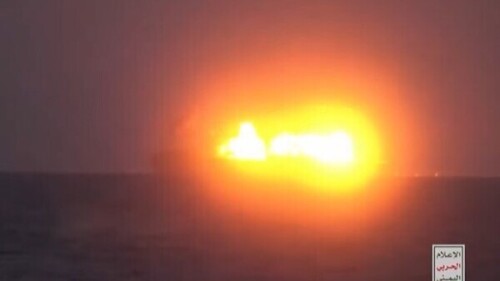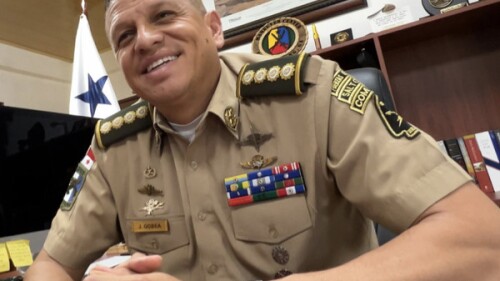[Originally published under the headline “Recent Iran Protests Part Of Potetial Wider Unrest”]
Protesters in the southern Iranian city of Kazerun represent wider percolating unrest that has continued in Iran since the large protests in December and January.
Several protesters were reportedly killed on May 16 when police used deadly force to disperse them.
Video posted online on Tuesday showed hundreds of people chanting that they would “avenge” the dead during renewed protests.
The seeds of this week’s protests lie in the mass protests that broke out in Mashhad last December.
They soon spread throughout rural areas and regional centers in Iran. Reports indicated that outside Tehran, they were far larger than the mass protests of 2009. A UN Security Council discussion on the protests on January 5 said that more than 1,000 were reportedly detained and affirmed that protesters had burned government offices, banks and others infrastructure.
Since then, there have been continued local protests in Iran. This has also included women refusing to wear the headscarf that Iranian law imposes. Usually these take the form of “White Wednesday” protests, named for the women who don white hijabs on Wednesdays and sometimes remove them.
For instance, activist Masih Alinejad wrote in March that it was “becoming increasingly common to see women walk certain distances in Iran unveiled.”
On the eve of his May 21 speech, Secretary of State Mike Pompeo tweeted that “we support the Iranian people who are demonstrating against an oppressive government.
Three deaths and internet interruption show the regime’s true nature.”
Pompeo referenced the ongoing social unrest and challenges to the Iranian regime in his Iran speech on Monday: “The protests of the past few months show that the Iranian people are deeply frustrated with their own government’s failures.”
Inside Iran, the Pompeo speech galvanized a local Farsi hashtag calling for regime change and another titled “thank you Pompeo.”
Reasons for the protests in Iran are myriad, with some blaming a bad economy, anger over the authoritarian regime, suppression of minorities and women and resentment over Iran’s foreign policy.
For instance, the Kazerun protests, a gathering that initially was fueled by anger over changes in local county boundaries, became a protest against government policy.
People chanted: “The government supports Gazans but betrays Kazerun,” and “Our enemy is here, not in the US,” The Daily Beast reported.
M. Hanif Jazayeri, a news editor who closely follows protests in Iran, wrote on May 22 that Iran’s truckers were also on strike over the “steep cost of government tolls on roads.” He said truckers in 62 cities in 23 provinces had taken part in the strike. Other accounts said the strike only spread to seven provinces.
The Iranian regime’s only answer to the protests has been to either deny they are happening or to suppress them with police. In Kazerun, The New Arab reported that an estimated 3,700 anti-regime protesters had been arrested. The truckers’ strike has so far not been met with the regime’s batons. Instead, people have been waiting in long lines because of a shortage of fuel as the strike went into its second day, BBC Persian reported.
The regime continues its policies of executions and arresting activists. The regime sentenced a Kurdish man, Ramin Hossein Panahi, to death in January and intends to carry out the execution at the end of Ramadan, according to Amnesty International. In addition, a group of 13 environmental activists detained in January is still being held, accused of “spying.” One of the more outlandish charges was that a fishing rod one activist had was an antenna being used to communicate with foreign intelligence.
The state’s obsession with hunting down such innocuous groups appears to show its growing paranoia.
As it clamps down on social media and its media speak of “Zionist” plots, it refuses to address the root causes of the unrest at home.
Seth Frantzman is a writing fellow at the Middle East Forum






